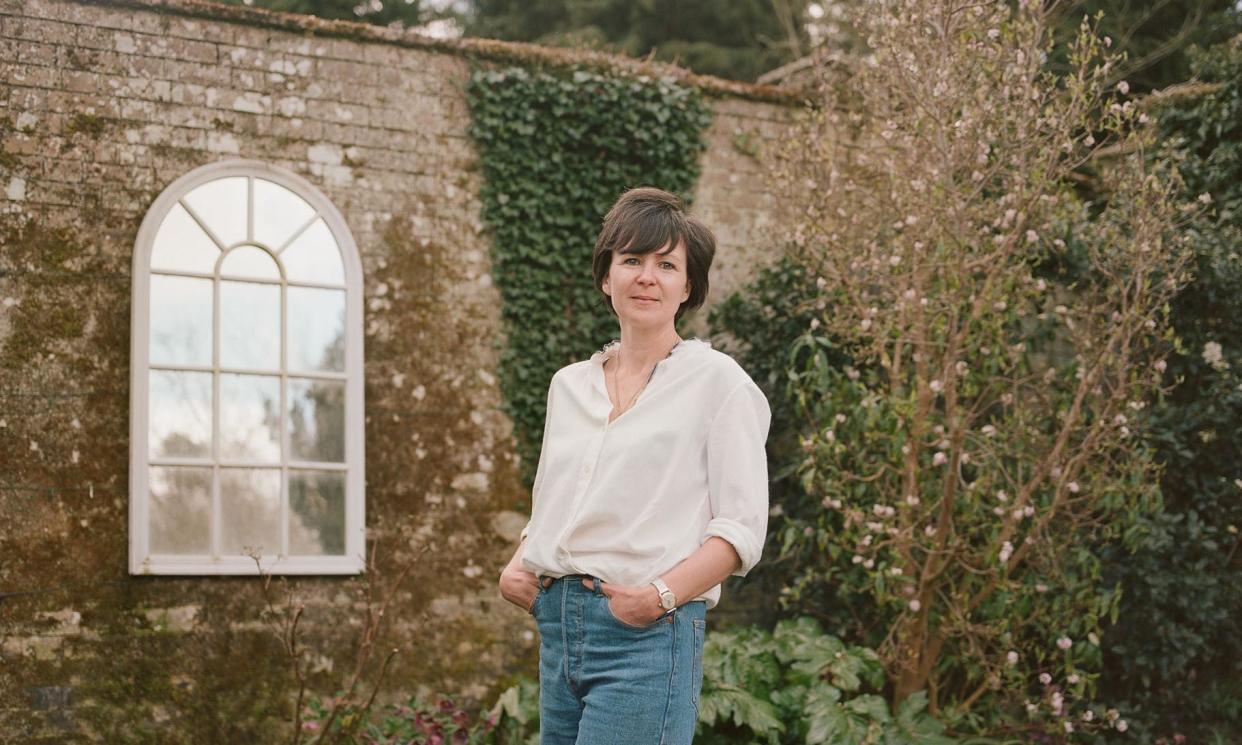The Garden Against Time by Olivia Laing review – earthly paradise

Just as the first lockdown was easing, which is to say in summer 2020, Olivia Laing moved into a Georgian house in Suffolk that came with the tangled remnants of a once-glorious walled garden. She had always been a plant person, having spent her 20s training to be a herbalist, but a lifetime of insecure accommodation had meant making do with borrowed plots and communal corners. Now, in addition to getting a garden to call her own, Laing had also acquired something equally wondrous: a husband. After two decades of being single, she had recently married the poet Ian Patterson, a man of her parents’ generation.
The garden, then, was going to have to contain an awful lot of hopes and anxieties, not to mention a great deal of radical clearing and imaginative making. This sky-high expectation was not just because it was Laing’s first garden, nor even because it was where she was going to put down permanent roots, but because it had been created by a famous plant man. In 1961 Mark Rumary, of the esteemed Suffolk nursery Notcutts, had bought the house and set about turning the garden into the kind of Arts and Crafts masterpiece for which he was internationally known.
Drawing on the practice of Gertrude Jekyll and, before that, William Morris, Rumary had divided up his third of an acre into a series of “rooms” using plants instead of bricks and mortar, and filling them with Tibetan cherry, skimmia, white phlox and lily tulips. Although the garden had gone to seed in the decade since Rumary’s death, there was no denying the lingering evidence of its elevated ancestry. Laing reports that the figs in one corner came from Sissinghurst where Rumary once worked, while the bushy mulberry tree was planted in the reign of James I.
In one way Laing’s book is an account of restoring the garden to its glory days. This gives her the chance to write such glorious, looping sentences as “I cut back thickets of honeysuckle and discovered astrantia, known as melancholy gentleman for its stiff Elizabethan ruffs and odd, pinkish-green livery”. But just at the point where she seems in danger of disappearing into a private dreamscape, Laing pulls up sharply to remind us that a garden, no matter how seemingly paradisical, can never be a failsafe sanctuary from the brutish world. It always arrives tangled in the political, economic and social conditions of its own making.
Laing shows how many of England’s most sublime gardens are built on a 'grotesque' moral vacuum
She is thinking here of the uncomfortable fact that many of England’s most sublime gardens, the sort that people pay to view at the weekend, are built on a “grotesque” moral vacuum. She singles out nearby Shrubland Hall, whose stately vistas and tumbling terraces were funded by money derived from plantations on the other side of the world. Those brutal mono-cultures of sugar, cotton and tobacco depended in turn on the labour of enslaved people traded from west Africa like one more commodity.
Other land crimes that Laing wants us to consider lie closer to home. She explains that many of England’s large estates would never have progressed beyond a modest manor house with a useful kitchen garden were it not for the enclosure movement of the 18th century. By a series of parliamentary acts, the peasantry was deprived of its ancient right to graze animals and collect kindling on the commons. In effect it had been turned into an agricultural proletariat, obliged to depend on a wage from the Big House.
With this in mind Laing is particularly scathing of the work of Capability Brown, the 18th-century landscape designer, so called because there was nothing he couldn’t do to achieve the “natural” look that his wealthy clients, busy upgrading their gentleman’s residences to outrageous pleasure palaces, demanded. Brown would move whole villages if they spoiled the view from the drawing room, and corralled untidy livestock into picturesque groupings by using “ha-has”, steep ditches that did away with the need for tell-tale fencing. Encoded within Brown’s artificial landscapes was the ruinous suggestion that existing social hierarchies were natural and permanent.
In this book Laing perfects the methodology she deployed so skilfully in her much-loved The Lonely City and more recent Everybody, of embedding biographical detours to advance rather than merely illustrate her central argument. Concentrating on the life and work of the “peasant poet” John Clare, for instance, allows her to show the devastating psychological effects of being thrown off your ancestral lands. Reading Paradise Lost gives her clues as to the scale of early colonial looting (Milton’s Eden is full of jetsam from the West Indies as if “washed ashore after a shipwreck”).
Finally, a consideration of Derek Jarman’s shingle garden at Dungeness prompts Laing to think about what to cultivate in a time of plague. Jarman was dying of Aids when he plotted out his pebbly paradise with gorse and sea kale. Laing, in turn, soothes some of her jitters during the Covid pandemic by filling up her new garden with fritillaries and stripy dahlias. She is painfully aware, though, of her unfair privilege, especially compared with all those other Britons, trapped in blocks with nowhere to spend their mandated outside hour apart from a neglected patch of open space. No amount of clever landscaping can suggest that this is in any way natural and nor, indeed, should it ever be considered permanent.
• The Garden Against Time: In Search of a Common Paradise is published by Picador. To support the Guardian and Observer order your copy at guardianbookshop.com. Delivery charges may apply.


